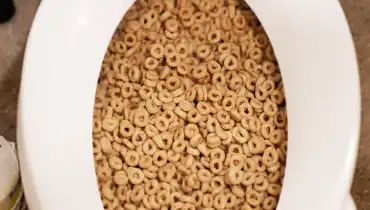Is it Common to Flush Food in the Toilet?
Is it Common to Flush Food in the Toilet?
Blog Article
Everyone will have their unique idea with regards to Think Twice Before Flushing Food Down Your Toilet.

Introduction
Many people are usually confronted with the dilemma of what to do with food waste, specifically when it involves leftovers or scraps. One common concern that occurs is whether it's fine to purge food down the toilet. In this short article, we'll explore the reasons why individuals might consider purging food, the consequences of doing so, and alternate approaches for proper disposal.
Reasons people could think about purging food
Lack of understanding
Some individuals might not be aware of the prospective damage caused by purging food down the toilet. They might mistakenly think that it's a safe method.
Convenience
Flushing food down the toilet might feel like a quick and simple service to throwing away undesirable scraps, specifically when there's no close-by garbage can available.
Negligence
In some cases, people may merely select to flush food out of large laziness, without considering the repercussions of their actions.
Effects of flushing food down the toilet
Environmental effect
Food waste that ends up in waterways can contribute to air pollution and damage marine ecological communities. In addition, the water made use of to purge food can strain water sources.
Plumbing issues
Flushing food can lead to clogged up pipelines and drains pipes, causing costly pipes repair work and troubles.
Kinds of food that should not be purged
Fibrous foods
Foods with fibrous structures such as celery or corn husks can obtain tangled in pipes and cause blockages.
Starchy foods
Starchy foods like pasta and rice can absorb water and swell, resulting in clogs in pipelines.
Oils and fats
Greasy foods like bacon or cooking oils must never ever be purged down the bathroom as they can solidify and trigger obstructions.
Correct disposal approaches for food waste
Using a garbage disposal
For homes geared up with waste disposal unit, food scraps can be ground up and flushed via the plumbing system. Nevertheless, not all foods are suitable for disposal in this fashion.
Recycling
Certain food packaging materials can be reused, minimizing waste and decreasing environmental impact.
Composting
Composting is an eco-friendly way to take care of food waste. Organic products can be composted and used to enrich soil for horticulture.
The value of proper waste management
Decreasing ecological injury
Appropriate waste management practices, such as composting and recycling, aid lessen air pollution and protect natural resources for future generations.
Safeguarding pipes systems
By avoiding the method of flushing food down the bathroom, home owners can avoid pricey pipes fixings and keep the stability of their pipes systems.
Verdict
In conclusion, while it may be appealing to flush food down the bathroom for benefit, it is essential to understand the potential repercussions of this activity. By embracing correct waste monitoring methods and disposing of food waste sensibly, individuals can contribute to much healthier plumbing systems and a cleaner environment for all.
FLUSH FOOD DOWN THE TOILET?
FLUSHING FOOD CAN CAUSE BLOCKED DRAINS IN YOUR HOME
All of the plumbing fixtures in your home are connected to the same sewer pipe outside of your home. This outdoor sewer pipe is responsible for transporting all the wastewater from your home to the Council sewer mains. Even small pieces of food that go down the kitchen sink can cause problems for your sewer. It should therefore be obvious that flushing larger bits of food, such as meat, risks a clog in either the toilet itself or the sewer pipes. Flushing greasy food is even more problematic because oil coagulates when it cools, coating the interior lining of your pipes.
THE TOILET IS NOT A BIN
Food isn’t the only thing that people shouldn’t be flushing down the toilet. People use the toilet to dispose of all kinds of things such as tampons, makeup wipes, dental floss, kitty litter and even underwear. Water goes to great lengths to educate residents about the high costs and stress placed on wastewater treatment systems simply from people flushing the wrong stuff down the toilet. It costs taxpayers millions of dollars each year, and homeowners thousands in blocked drain repairs.
FLUSHING FOOD IS A WASTE OF WATER
Flushing food is a waste of our most precious resource - water. In June this year Level 1 water restrictions were introduced to protect water supply from drought conditions. Much of New South Wales continues to be affected by prolonged drought with recent figures revealing up to 97 per cent of the state remains in drought. Depending on whether you have a single or dual flush toilet, every single flush uses between five and 11 litres of water. In the current climate this is a huge amount of water to be wasting on flushing food that should be placed in the bin (or better yet, the compost).
https://www.jabplumbingsolutions.com.au/blog/can-you-flush-food-down-the-toilet

Do you enjoy more info about Flushing Food Down the Toilet?? Put a review down the page. We would be happy to know your thoughts about this review. We are looking forward to see you back again before long. If you appreciated our blog posting plz make sure you remember to pass it around. Thank you for being here. Kindly pay a visit to our site back soon.
Start Now Report this page